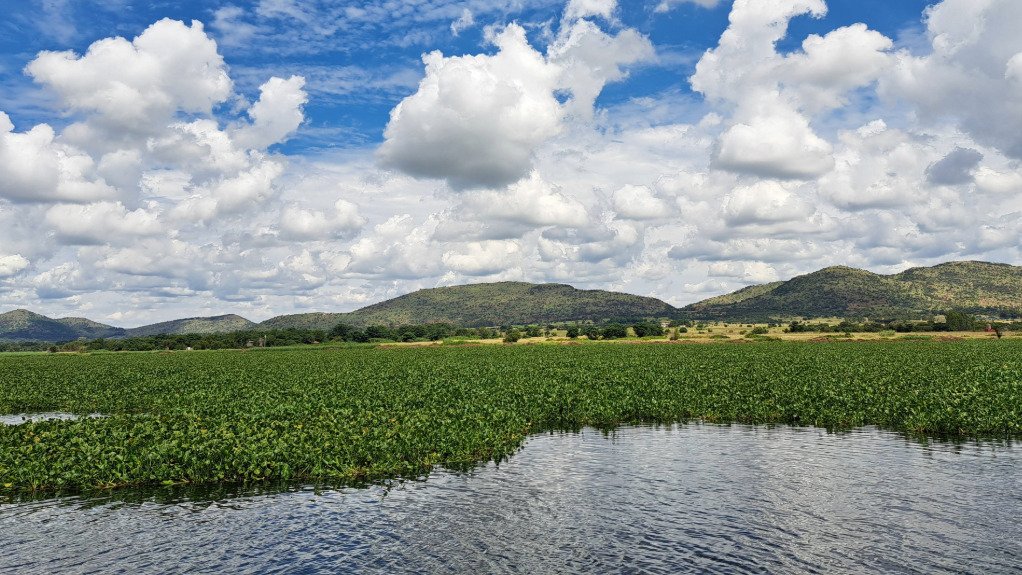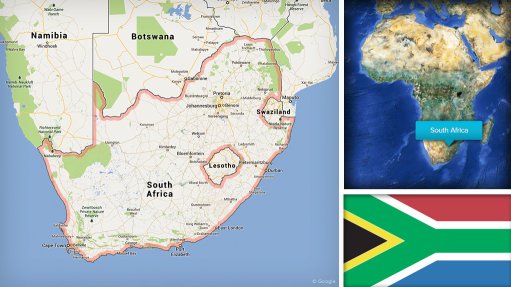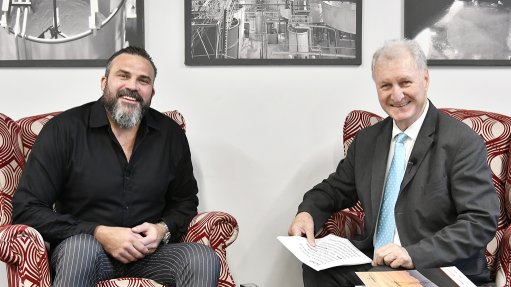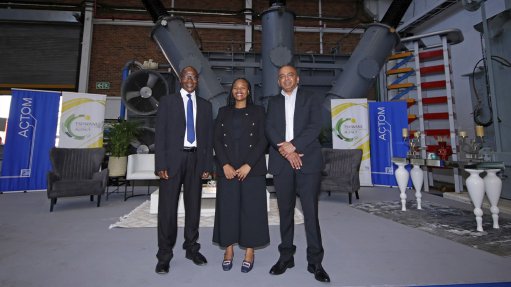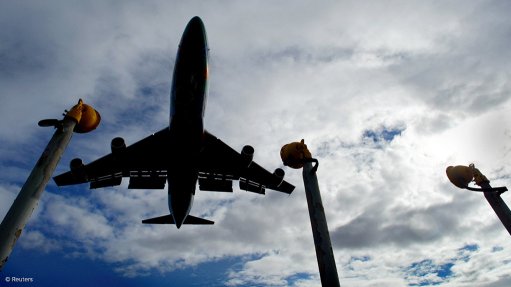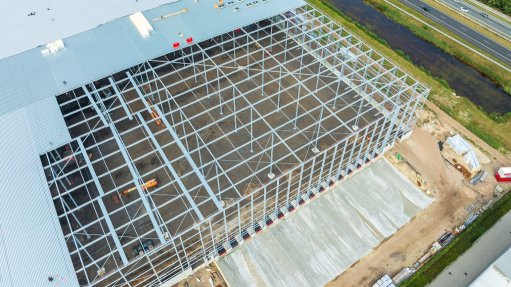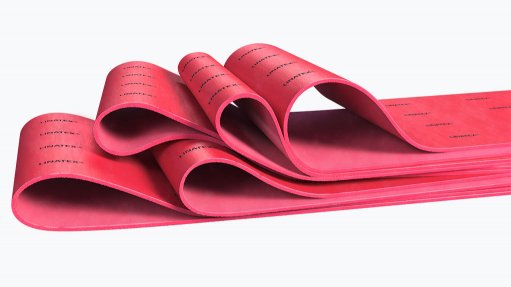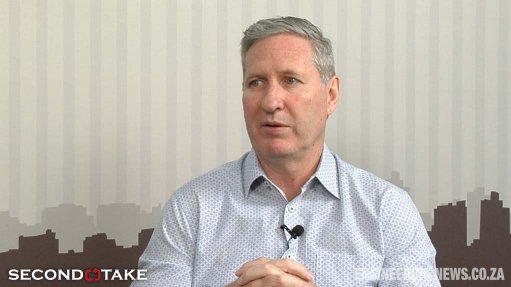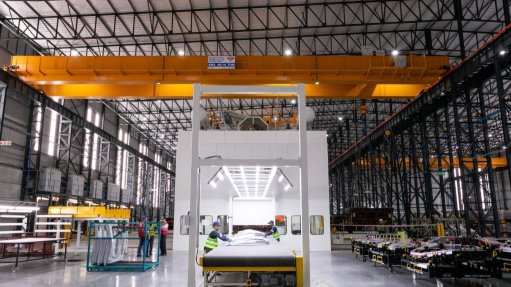More coordination needed to tackle Hartbeespoort dam pollution
An increase in intergovernmental commitment and stakeholder coordination is required to mitigate the ongoing pollution that plagues the Hartbeespoort dam.
The dam, which was constructed in 1921 and commissioned in 1923, has increasingly become eutrophic, with the high levels of nutrients supporting a rapid growth of hyacinth, which has also deprived the water of oxygen, resulting in incidents of fish kill.
This is owing to rapid urbanisation that has led to increased solid waste and wastewater discharges entering the upstream of the dam from the municipal wastewater treatment works, said Water and Sanitation Deputy Minister Sello Seitlholo during a site visit to the dam to assess Magalies Water’s progress on the continuous rehabilitation programme to remove the invasive plants.
Magalies Water was appointed two years ago to develop a three-year remedial programme to profile problematic contaminants as well as to remove the floating plants – hyacinth and algae – negatively impacting the water quality of the dam.
The current level of water hyacinth infestation is 33.84% on the surface of the dam, which provides water for irrigation, with about 20% used for domestic consumption and compensation flows.
Seitlholo has also called on Madibeng local municipality to address the effect of effluent that is not adequately treated at the municipality’s water treatment plant before being released into the Hartbeespoort catchment.
The municipality needs to implement its by-laws to curb the problem of pollution caused by littering and chemical spillage from industrial companies.
“It is unfortunate that the crisis that we are facing is predominantly caused by municipalities. There are, of course, other sources of pollution from agricultural runoffs and chemicals from industries,” he said.
“As a department, we have therefore made a commitment to give more focus on municipalities and we are also at the forefront of advocating the polluter-pay principle so that everyone knows of the repercussions of polluting our water bodies.”
Seitlholo further reiterated the need for intergovernmental commitment to resolve issues of pollution within the country’s water courses.
“There should not only be a coordination by different stakeholders to tackle the issue of pollution on our water resources, but different government departments like departments of Environment, Fisheries and Forestry and Human Settlements should also work together to implement the reforms as included in Operation Vulindlela or in the Medium-Term Development Plan.”
“If there is no coordination among us as government to address the reforms at a local level including the issues of pollution, we will not achieve anything,” he said.
Since implementing its bioremediation programme, Magalies Water has appointed subcontractors to complement the biological control through the mechanical and manual removal of water hyacinth.
Biological remediation or nano-bubble technology has also been piloted at the dam and focuses on specific parts of the inlets from the municipality.
This technology efficiently dissolves much-needed oxygen into the aquatic ecosystem, and will help reduce a certain amount of nutrient (nitrates and phosphates) in the water.
Article Enquiry
Email Article
Save Article
Feedback
To advertise email advertising@creamermedia.co.za or click here
Comments
Announcements
What's On
Subscribe to improve your user experience...
Option 1 (equivalent of R125 a month):
Receive a weekly copy of Creamer Media's Engineering News & Mining Weekly magazine
(print copy for those in South Africa and e-magazine for those outside of South Africa)
Receive daily email newsletters
Access to full search results
Access archive of magazine back copies
Access to Projects in Progress
Access to ONE Research Report of your choice in PDF format
Option 2 (equivalent of R375 a month):
All benefits from Option 1
PLUS
Access to Creamer Media's Research Channel Africa for ALL Research Reports, in PDF format, on various industrial and mining sectors
including Electricity; Water; Energy Transition; Hydrogen; Roads, Rail and Ports; Coal; Gold; Platinum; Battery Metals; etc.
Already a subscriber?
Forgotten your password?
Receive weekly copy of Creamer Media's Engineering News & Mining Weekly magazine (print copy for those in South Africa and e-magazine for those outside of South Africa)
➕
Recieve daily email newsletters
➕
Access to full search results
➕
Access archive of magazine back copies
➕
Access to Projects in Progress
➕
Access to ONE Research Report of your choice in PDF format
RESEARCH CHANNEL AFRICA
R4500 (equivalent of R375 a month)
SUBSCRIBEAll benefits from Option 1
➕
Access to Creamer Media's Research Channel Africa for ALL Research Reports on various industrial and mining sectors, in PDF format, including on:
Electricity
➕
Water
➕
Energy Transition
➕
Hydrogen
➕
Roads, Rail and Ports
➕
Coal
➕
Gold
➕
Platinum
➕
Battery Metals
➕
etc.
Receive all benefits from Option 1 or Option 2 delivered to numerous people at your company
➕
Multiple User names and Passwords for simultaneous log-ins
➕
Intranet integration access to all in your organisation



